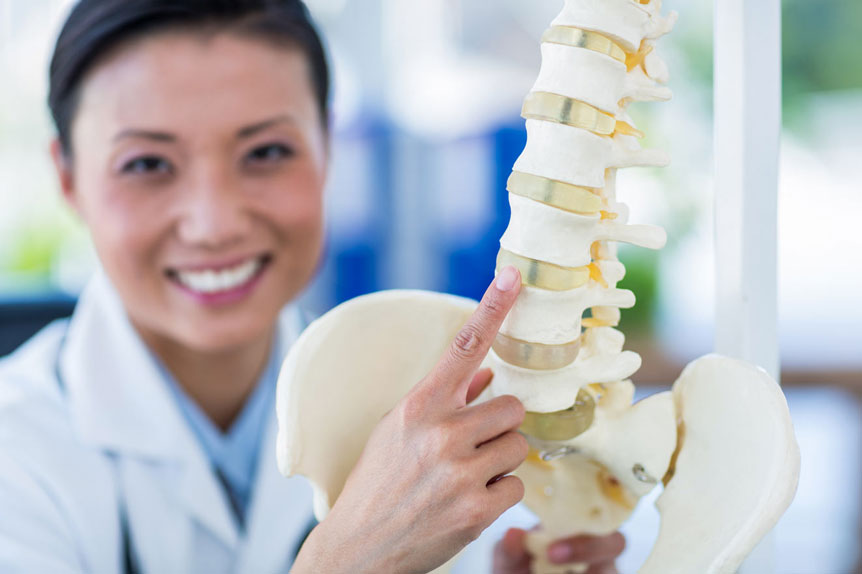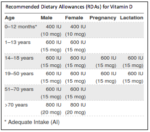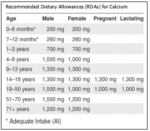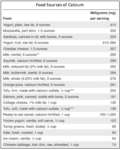How to Keep Your Bones Healthy
When is the last time you thought about your bones?
Bones are important for a few reasons. They support muscle, skin and fat, protect internal organs and make blood cells. They also help with moving muscles and storing mineral salts like calcium and phosphorus.
When you are a child and teenager, bone is added to your skeleton faster than old bone is lost. These are the crucial years when bones become larger, heavier and denser. Everyone reaches a point called the peak bone mass which is when people have the maximum strength and density possible within their body. This can happen anywhere from age 18 to mid-30’s. The more bone you have at the time of peak bone mass, the less likely you are to break a bone or get osteoporosis later in life. After the peak point, bone loss slowly starts to exceed new bone formation. Bone loss speeds up later as we age.
If you are curious to know how healthy your bones are, a bone mineral density (BMD) test can be done to measure bone mass. This test will tell you if you have normal bone density, low bone density (osteopenia) or osteoporosis. Low bone density can happen for many reasons including genetics, poor bone development as a child and teenager, hormonal factors, nutrition, physical activity, lifestyle behaviours, a medical condition or medication. Having low bone density does not mean osteoporosis will develop for sure, but the risk is considerably greater. It is recommended for women over 65 and men over 70 to get a BMD test and earlier for those with risk factors.
Osteoporosis is a bone disease in which bone loss is severe or too little bone is formed or both. The holes in the bone show that bone mass has been lost and there is damage to the bone structure. Bones become weak and we are not able to feel this happening. Often the first sign of osteoporosis is a broken or fractured bone. The frightening fact is that osteoporosis causes 2 million broken bones each year in the United States.
So how can we maintain or improve our bone health in hopes to avoid osteoporosis?
We should focus on lifestyle choices because these are factors we are generally able to control. This includes a diet rich in calcium, vitamin D and protein (foundation for building new bone), weight bearing and muscle strengthening exercises, and avoiding smoking and excess alcohol.
The two most important nutrients for bone health are calcium and vitamin D. Calcium is the key to building bone strength. Our body cannot produce calcium so we must get it from our diet. If not enough is obtained from our diet, it is taken from our bones to fulfil functions within the body.
Vitamin D protects bones and is needed for the body to absorb calcium. There are 3 ways to get vitamin D: sunlight, food and supplements. Your body is able to make vitamin D from sunlight, store it and use it later. The amount made depends on many factors such as the time of day, season and skin pigmentation. Depending on where you live, vitamin D production may decrease or be completely lacking during the winter (ex. Canada). Numerous people are concerned about skin cancer so they try to protect their skin by staying out of the sun, covering up with clothing or using sunscreen. You’ll be surprised to know that using sunscreen with as little as SPF (sun protection factor) of 8 reduces vitamin D production by 95%. It seems that people need to get vitamin D from food and supplements to ensure they are meeting their requirements. It is unfortunate that vitamin D is only available naturally in a few foods such as fatty fish. Most of the vitamin D we consume has been added to food items like dairy products and orange juice. It can be hard to get all the vitamin D needed from food alone. You might want to consider taking a supplement to get enough vitamin D that is needed for bone health. First check to make sure any other medications you may be taking (multivitamins, calcium supplements) don’t contain vitamin D as well. Ask your health care provider if you have questions or need helping choosing a supplement.
Take a look at the tables below to see how much calcium and vitamin D we need each day and in which foods they can be found.
Along with diet, exercise plays a key role in maintaining or improving bone and muscle strength. When we are young, physical activity helps to maximize peak bone density and strength. Maintaining an active lifestyle throughout life can help promote bone mass, muscle strength, coordination and balance as well as prevent falls and fractures.
There are two types of exercises that are important for bone health: weight-bearing and muscle-strengthening. Weight-bearing exercises are when the body moves against gravity while standing upright. They can be high-impact which help build bone and bone strength or low-impact which also help keep bones strong. If you have a broken bone from osteoporosis or are at risk, you might need to avoid high-impact exercises. High-impact exercises include dancing, high-impact aerobics, hiking, jogging/running, jumping rope, stair climbing and tennis. Low-impact exercises include using the elliptical machine, stair-step machines, walking fast on the treadmill or outside, and low-impact aerobics. Muscle-strengthening exercise (also called resistance exercise) is activity that moves your body, a weight or some other resistance against gravity. It includes lifting weights, using elastic exercise bands, weight machines and lifting your own body weight.
In conclusion, maintaining or improving our bone health can be achieved by diet, exercise and other lifestyle factors as well as getting a BMD test when appropriate. In combination, these can help the body reach a better balance between new bone being formed and old bone being removed.
Activity: On a piece of paper, write down what you ate yesterday and try to estimate how much calcium and vitamin D you consumed using the tables with food sources above.
Activity: Perform one high-impact weight-bearing activity for 5 minutes during your lunch break (ex. dancing, stair climbing, running outdoors). If you need to avoid high-impact exercises, try to perform one low-impact weight-bearing activity for 10 minutes (ex. fast walking outside).





